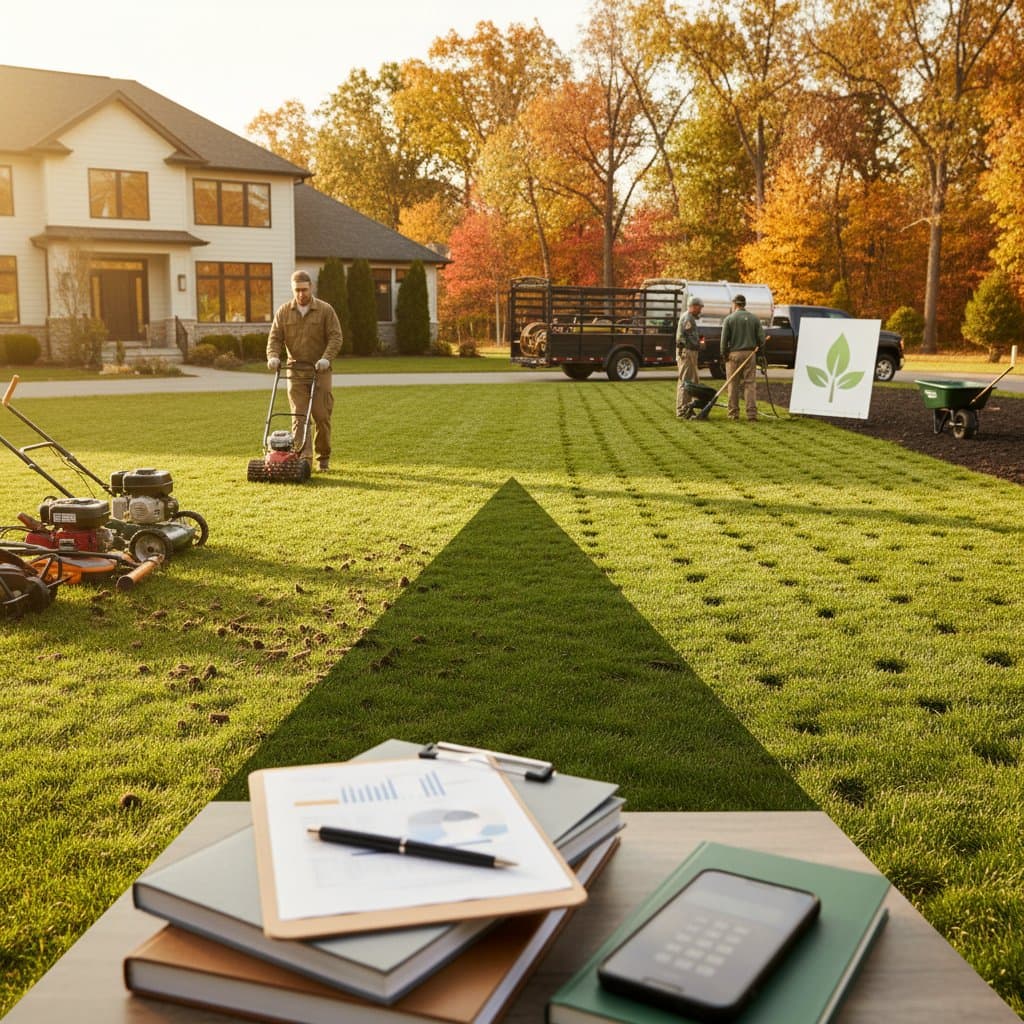Optimal Timing for Fall Lawn Aeration: Weighing DIY Savings Against Professional Services in 2025
A vibrant lawn requires adequate air, water, and nutrients to penetrate the soil and nourish the roots. Compaction over time hinders this process, especially after summer heat and foot traffic. Fall aeration addresses this by creating pathways in the soil, allowing grass to recuperate and fortify itself for winter dormancy. Selecting the precise timing and method proves essential, as homeowners often debate between self-managed efforts and expert intervention. This guide examines costs, techniques, and outcomes to inform your decision.
The Fundamentals of Lawn Aeration
Aeration involves employing a specialized device to extract small cores of soil from the lawn surface. These cores decompose rapidly, enriching the topsoil with organic matter. The resulting voids alleviate compaction and facilitate the absorption of moisture and amendments.
Two primary aeration methods exist:
- Core aeration, which extracts soil plugs to provide thorough decompression.
- Spike aeration, which pierces the ground to form channels without material removal.
Core aeration excels in dense or clay-based soils, as it eliminates rather than compresses the earth. Spike aeration suffices for looser, sandy conditions where minimal disruption yields benefits.
Safety consideration: Locate and flag underground utilities, such as irrigation lines or wiring, prior to operation. Striking these elements risks expensive damage and service interruptions.
Executing DIY Aeration: Equipment, Effort, and Expenses
Homeowners frequently opt for self-directed aeration to control expenses and schedules. Local rental outlets provide mechanized core aerators on hourly or daily terms.
Standard DIY expenditures encompass:
- Core aerator rental: $50 to $100 for four hours, $100 to $150 for a full day.
- Fuel and potential delivery fees: $10 to $30.
- Supplemental seeding and fertilizer: $20 to $100, depending on yard dimensions.
Plan for four to eight hours on a typical quarter-acre lot. Remove obstacles and mow the grass short beforehand, as the equipment weighs over 200 pounds. Professionals suggest multiple passes in perpendicular patterns, first north-south, then east-west, to achieve uniform depth.
Benefits of the DIY approach:
- Complete flexibility in timing.
- Reduced long-term costs with annual repetition.
- Personal involvement in lawn stewardship.
Challenges of the DIY approach:
- Demands considerable physical exertion, particularly on uneven terrain.
- Logistics of transporting bulky machinery.
- Potential for inconsistent results if depth varies.
Follow aeration with overseeding for optimal outcomes. The perforations shield seeds from predators and retain necessary humidity, often yielding denser turf within a month.
DIY Versus Professional: A Cost and Effort Analysis
| Method | Estimated Total Cost | Duration Required | Required Expertise | Typical Add-Ons |
|---|---|---|---|---|
| DIY | $80 to $250 | 4 to 8 hours | Moderate physical | Seeding, topdressing |
| Professional | $150 to $400 | 1 to 2 hours | Minimal | Soil analysis, amendments |
This comparison aids in evaluating trade-offs. For compact yards under 5,000 square feet, DIY typically delivers cost efficiency. Larger properties or severe compaction benefit from professional precision, minimizing future interventions.
Beyond raw figures, assess overall value. An imprecise DIY attempt might necessitate corrective measures, eroding savings. Expert services, executed with calibrated tools, often enhance soil structure enduringly, curbing issues like thatch buildup.
Pitfalls to Sidestep in Aeration
- Neglecting site preparation: Trim grass to 1.5 inches to enable effective plug ejection.
- Aerating parched soil: Dry conditions blunt tool efficacy and strain equipment; water lightly a day prior.
- Overlooking post-treatment: Apply 0.5 inches of water immediately and fertilize within 48 hours to capitalize on openness.
- Excessive frequency: Limit to annual for heavy soils, biennial for others, to preserve root integrity.
Adhering to these guidelines maintains soil vitality without undue stress on the turf.
Insights from Homeowner Experiences
A Midwest resident reported that biannual DIY aeration reduced irrigation needs by 30 percent, attributing it to improved percolation. In contrast, a coastal gardener noted that professional core aeration doubled germination rates for drought-resistant varieties over spike methods.
Such accounts underscore regional variances in soil composition and weather patterns. Consult local agricultural extensions for tailored advice on moisture levels and grass types.
Steps to Achieve Lasting Lawn Renewal
Fall aeration stands as a cornerstone practice for invigorating turf ahead of colder weather. Whether managing the task personally or engaging specialists, prioritize soil moisture and growth phase alignment.
For enthusiasts of manual labor seeking economies, secure a rental unit and proceed methodically to secure robust results. Time-constrained individuals with expansive grounds gain from professional uniformity and supplementary recommendations.
Integrate aeration with targeted seeding and nutrient applications during late summer to early autumn, when temperatures hover between 55 and 75 degrees Fahrenheit. This regimen fosters resilient roots, paving the way for a lush, resilient landscape come spring.





